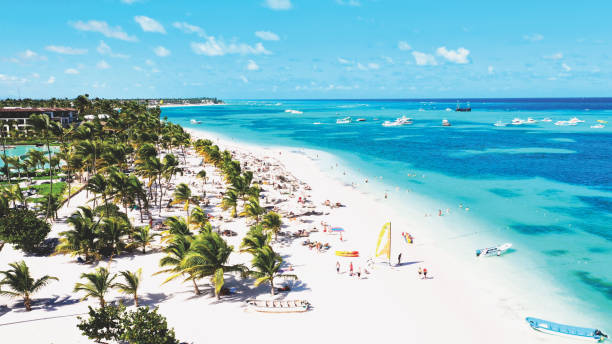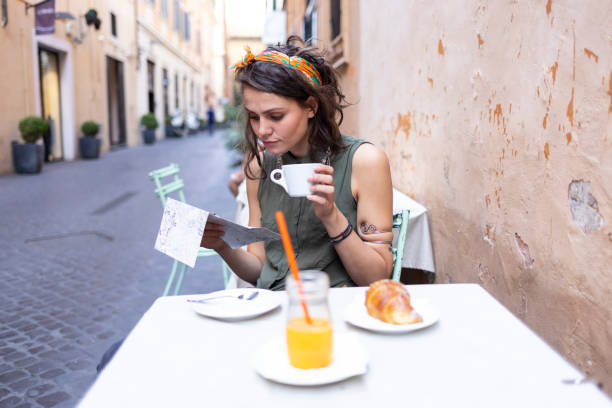The Ultimate Guide to Bioluminescent Bay Tours in Puerto Rico

Imagine kayaking through calm, dark waters, only to watch as every stroke of your paddle lights up in a mesmerizing glow. It’s like something straight out of a sci-fi movie, but it’s real. This is the magic of bioluminescent bays, and Puerto Rico is home to some of the brightest, most stunning displays on the planet.
If you’re a nature lover, adventure seeker, or just someone looking for a truly unique experience, a bioluminescent bay tour in Puerto Rico should be at the top of your bucket list. But what exactly is bioluminescence, and why is it so special here?
In this post, I’m going to take you through everything you need to know about Puerto Rico’s famous glowing bays. From the science behind the phenomenon to the best places to see it, what to expect on a tour, and how to make the most of your visit. Whether you’re planning your first trip to Puerto Rico or just curious about this natural wonder, you’re in the right place!
What is Bioluminescence?
Bioluminescence is a natural phenomenon where living things give off light. This happens because of chemical reactions in their cells. You can see this amazing sight in many marine creatures, such as some plankton, jellyfish, and fish. It adds to the stunning beauty of areas like Puerto Rico’s bioluminescent bays.
The Best Bioluminescent Bays in Puerto Rico
Puerto Rico is lucky enough to have three bioluminescent bays, each with its own charm, and all of them showcasing the magic of nature in their own unique way. Here’s a breakdown of the best spots to experience this incredible phenomenon:
Mosquito Bay (Vieques)
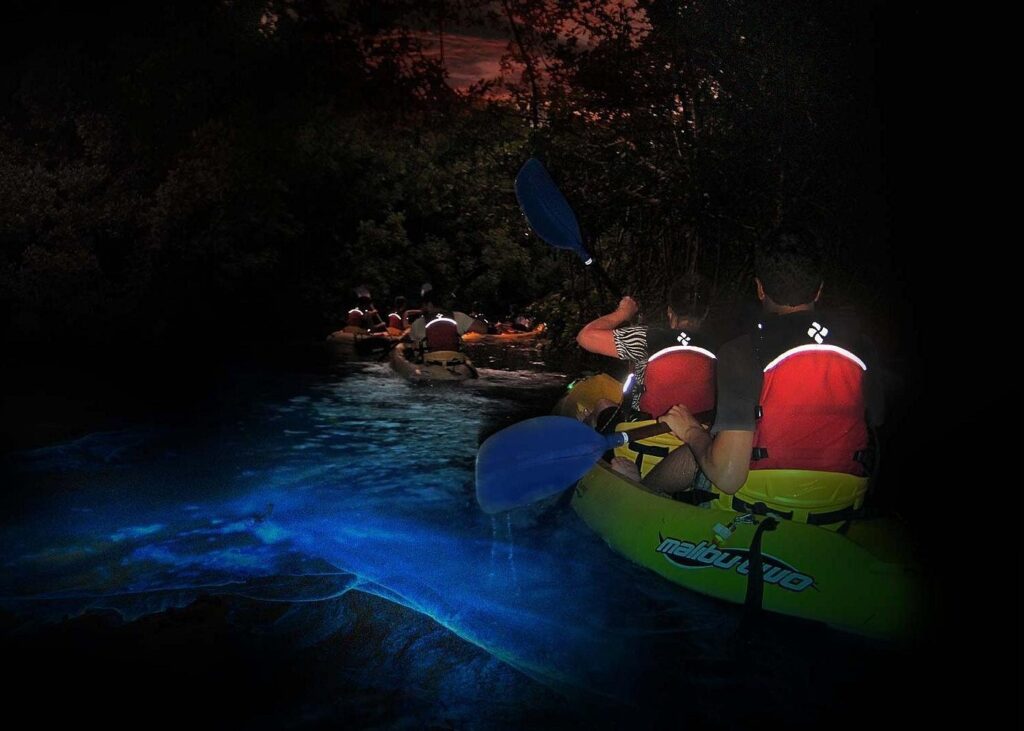
Let’s start with the big one: Mosquito Bay on Vieques Island. You’ve probably heard of it because it’s not just Puerto Rico’s most famous bioluminescent bay. It holds the record for being the brightest in the world, according to Guinness World Records. Pretty cool, right?
What makes Mosquito Bay so special is the sheer concentration of glowing dinoflagellates in the water. These little plankton are practically bursting with light, making for an absolutely jaw-dropping experience. The best time to visit? Summer months (around May through November) when the water is at its brightest. The only catch is that to get there, you’ll need to hop on a ferry or a small flight from the mainland to Vieques, but trust me, it’s totally worth the effort.
Pro tip: Mosquito Bay’s glow is best seen during a new moon, when the night sky is at its darkest and the glowing effect really stands out. If you time it right, it’s like paddling through a sea of stars! To secure a spot on an unforgettable tour, check out options like these highly-rated Bioluminescent Bay Kayaking Tours in Mosquito Bay.
La Parguera (Lajas)
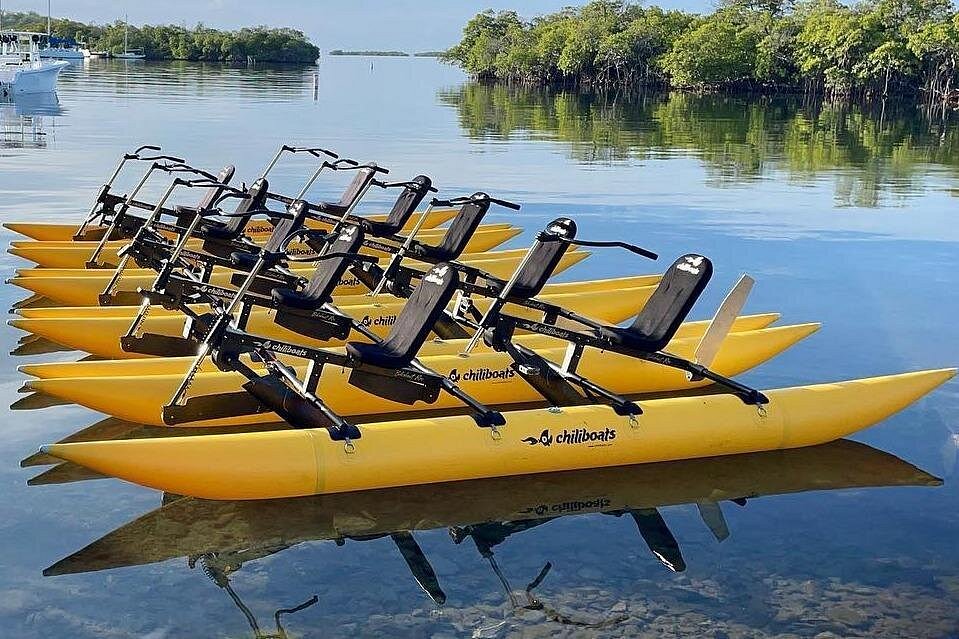
Next up, we’ve got La Parguera, located on the southwestern coast of Puerto Rico. While not quite as intense as Mosquito Bay, La Parguera still puts on a stunning light show and has the added benefit of being more accessible. It’s one of the few bioluminescent bays where you can actually take a boat ride (or a small kayak tour) right out into the glow.
What I love about La Parguera is that it’s a bit more laid-back and less crowded than Mosquito Bay. You can combine your bioluminescent adventure with a visit to nearby Cabo Rojo, famous for its beaches and cliffs, so you get the best of both worlds. The best time to visit La Parguera is around the full moon (when the glow is still visible, but the moonlight gives it a soft, mystical effect). For a memorable experience, consider booking a tour like these ones: Bioluminescent Bay tour in La Parguera.
Fajardo (Laguna Grande)
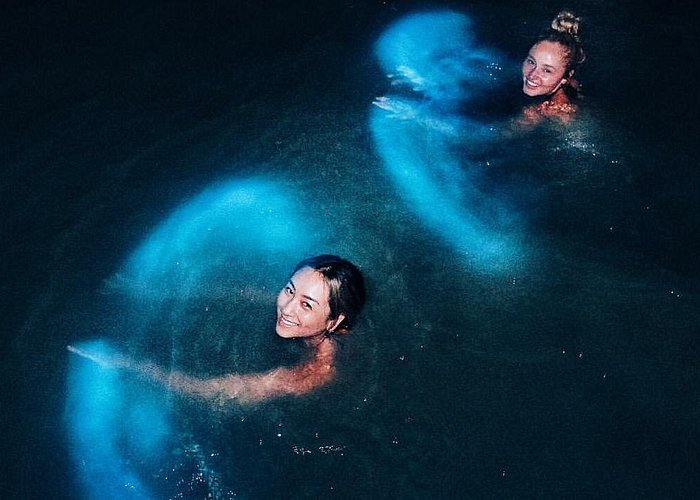
Finally, let’s talk about Fajardo, located on the northeastern tip of Puerto Rico. While Las Croabas isn’t as famous as the other two, it’s still a solid choice for a bioluminescent adventure. The bay is a little smaller and the glow a bit subtler, but it’s still breathtaking. Plus, it’s just a short drive from San Juan, making it an ideal option for a quick trip if you’re staying in the city.
Fajardo offers a more peaceful, quieter vibe compared to the other bays. It’s a great option if you’re looking for a more intimate experience or just don’t want to travel too far from the capital. You can find excellent tour options like this: Laguna Grande Bioluminescent Kayak Tours from Fajardo.
What to Expect on a Bioluminescent Bay Tour
Here’s a glimpse of what you can expect:
The Tour Types: Kayaking, Paddleboarding, and Boat Rides
The first choice you’ll have to make is how you want to experience the glow. There are a few different ways to tour the bioluminescent bays:
- Kayaking: This is one of the most popular options, and I totally get why. It’s quiet, peaceful, and allows you to get close to the glowing water. Plus, kayaking at night adds a little thrill to the experience as you paddle through the dark, illuminated water. Book a kayaking adventure here: Night Kayak Tour in Mosquito Bay.
- Paddleboarding: If you’re feeling a little adventurous and want a different perspective, paddleboarding is a fantastic choice. You’ll feel like you’re walking on water—literally—and it’s a fun challenge as you glide through the glowing waves.
- Boat Ride: For those who prefer a more relaxed experience, boat tours are available. While the boat doesn’t offer quite the same intimate feel as kayaking, it’s still magical to see the water light up around you. Plus, this option is usually a bit more comfortable, especially for families or those with small children. Check out options like this: Bioluminescent Bay Boat Tour from San Juan.
What Happens on the Tour?
Once you’re on the water, get ready for some jaw-dropping moments. The tour guides will typically start by giving you a bit of background on bioluminescence, how it works, why it happens, and the incredible creatures that make it all possible. But here’s the fun part: The real show begins when you start paddling or moving the water!
As soon as you disturb the water (whether it’s from your paddle or a slight wave), the plankton react by glowing bright blue-green. It’s a surreal sight. Imagine being surrounded by glowing trails as your paddle slices through the water, or if you’re on a boat, the wake of the boat leaving behind a glowing path. It feels like you’re traveling through a dream.
Guides often help you make the most of your experience by pointing out the best spots for glow sightings and sharing interesting facts about the ecosystem. They also do a great job of making sure everyone’s safe while still preserving the quiet, natural beauty of the bay.
Ideal Time for Your Tour
Most tours take place after sunset, as that’s when the glow is most visible. The best time to go is usually just after dark, between 7:00 PM and 10:00 PM, but it really depends on the season and the moon phase. If you’re looking for the brightest glow, aim for the darkest nights, typically around the new moon, when there’s minimal light pollution.
One thing to note is that these tours usually last around 1 to 2 hours, which is plenty of time to soak in the magic. Bring your camera (but don’t get too caught up trying to capture the perfect shot. It’s tricky to photograph bioluminescence!), and be ready to just enjoy the moment.
A Few Things to Keep in Mind
- Weather conditions: While bioluminescence doesn’t depend entirely on the weather, it’s important to note that rainy nights can sometimes reduce visibility. So, if the weather’s been stormy, you might want to check the forecast or reach out to your tour operator beforehand.
- Crowds: The more popular bays, like Mosquito Bay, can get crowded, especially during peak season. But don’t let that discourage you. The glow is so stunning that it still feels magical, even if there are a few other kayaks or boats around.
How to Get the Best Experience
Alright, so you’re ready to embark on your glowing adventure! But before you head out, there are a few things you can do to make sure your experience is as amazing as possible. After all, seeing bioluminescence up close is something you’ll remember for a lifetime. Here are some tips to help you get the most out of your tour:
Dress Comfortably (and Smartly!)
Let’s start with the basics. You’ll be out on the water at night, so make sure you’re dressed appropriately for the conditions. Here’s what you should wear:
- Comfortable clothes: Go for something light, breathable, and easy to move in. You might get splashed, so think about wearing something you don’t mind getting a little wet.
- Water shoes: If you’re kayaking or paddleboarding, you’ll want something sturdy and slip-resistant. Plus, there’s often a chance to step into the water, especially if you’re on a boat or doing a quick stop on a small beach. Water shoes are your best friend.
- Light jacket or sweater: Temperatures can dip a little at night, especially by the water, so it’s a good idea to bring something to stay warm.
Bring the Right Gear (and Keep it Simple)
- Waterproof bags: You’ll want to protect your phone, camera, and any other electronics you bring along. Most companies will provide small dry bags, but it’s always a good idea to bring one if you have your own.
- Bug spray: Mosquitoes are no joke around the bioluminescent bays, especially at night. A good layer of repellent will keep those little guys away. Trust me, you’ll be glad you brought it.
- A camera (but don’t get too attached): I know, you’ll want to capture the glowing waters, but keep in mind, bioluminescence is notoriously tricky to photograph! The glow doesn’t always show up well on regular cameras, especially without a long exposure. Just enjoy the moment, and maybe try capturing it on your phone if you have a good night-time setting. But remember, no photo will do it justice, so don’t get too hung up on that perfect shot!
Stay Calm, Paddle Smoothly
The more you stir up the water, the brighter the glow! But here’s the thing: You don’t want to splash around wildly (no cannonballs, please!). Paddle gently, and you’ll create those beautiful glowing trails without disturbing the water too much. If you’re on a boat, the guide will usually take care of steering while you enjoy the view.
It’s also a good idea to sit back, relax, and take it all in. Bioluminescent bays are all about the atmosphere. There’s something magical about the stillness of the night and the way the water lights up with every little movement.
Respect the Environment
The bioluminescent bays are fragile ecosystems, and it’s important to preserve their beauty for future generations. Be mindful of your surroundings, follow the guide’s instructions, and avoid making unnecessary disturbances in the water. This includes not using bright flashlights or flash photography, as it can affect the plankton’s natural behavior.
Also, keep in mind that these areas are often protected by local laws, so make sure you’re following any regulations or rules set by your tour operator. Trust me, a little respect for the environment goes a long way in keeping these magical places thriving.
Prepare for the Unexpected
Even though you’re visiting one of nature’s most extraordinary wonders, things don’t always go perfectly. The glow can sometimes be more faint than expected, depending on the time of year, weather, or moon phase. But don’t let that dampen the experience! You’re still getting a glimpse of something rare and beautiful, and part of the adventure is just being out there on the water, enjoying nature’s magic.
If the glow isn’t as intense as you hoped, the guides often have great tips and stories to share about the history of the bay or the science behind the phenomenon. The best advice here: Be flexible and enjoy the experience for what it is, even if it’s not “perfect.”
Other Things to Do in Puerto Rico
Puerto Rico has so much more than just its beautiful bio bays. El Yunque National Forest is a fantastic place where you can hike on green paths, visit waterfalls, and see unique animals. A trip to this rainforest makes your adventure feel even more natural.
If you love culture and history, the San Juan metro area is a place you should visit. You can stroll through the cobblestone streets of Old San Juan, admire the old buildings, and taste local food. If you enjoy the water, you can go snorkeling on beautiful beaches like Flamenco, where you will see colorful sea life. Whether you want to explore nature, learn about history, or just relax, Puerto Rico has many different things to offer. After your time on the island, don’t forget to enjoy its shining waters.
Related Posts:
- 18 Must-Do Activities in San Juan, Puerto Rico
- The Ultimate Guide to Snorkeling in Puerto Rico
- Ultimate Guide To El Yunque National Forest Tours
Take Away
In conclusion, bioluminescent bay tours in Puerto Rico are a stunning experience. They mix nature’s beauty with adventure. You can enjoy the wonderful glow of the waters by learning some helpful tips for your visit. It is important to pick the right season and tour to see the waters at their best. These tours are perfect for both travel lovers and curious explorers. They give you special moments that link you to the wonders of nature. I want to hear your stories or questions. Please comment below!
Frequently Asked Questions
What is the best time of year to see bioluminescence in Puerto Rico?
The best time to visit Puerto Rico’s bioluminescent bays is during the new moon phase when it is darkest. Stay away from full moons since their light makes it hard to see. Choosing an earlier tour improves your chance of seeing the glowing show.
Which bioluminescent bay is best in Puerto Rico?
While all bioluminescent bays are amazing, Laguna Grande in Fajardo is the brightest bioluminescent bay on the main island of Puerto Rico. But for the best brightness, Mosquito Bay in Vieques is the top spot in the world. La Parguera has special experiences, allowing people to swim in its glowing waters.
How much does it cost to go to the bioluminescent bay in Puerto Rico?
Tour prices for night kayaking in Puerto Rico’s bioluminescent bays usually begin at $65 per person. Prices can change based on different providers and what they include, like snacks or transportation. It’s a good idea to compare options. This way, you can find the best value for your amazing night kayaking experience.
Do you need a tour for bioluminescent bay?
Yes, a kayak tour is important to explore the bioluminescent bays well. Tours offer safety, equipment, and important information about this natural phenomenon. These guided experiences help you enjoy your time in the glowing waters.
Got Travel Questions or Tips?
Join r/NextDestination — the community where travelers swap advice, share hidden gems, and help each other plan unforgettable trips.
- Ask real questions & get real answers
- Share firsthand travel stories & tips
- Help others and get help planning your next destination
I personally respond to questions from my blog posts there. Come say hi!
Join the Community

